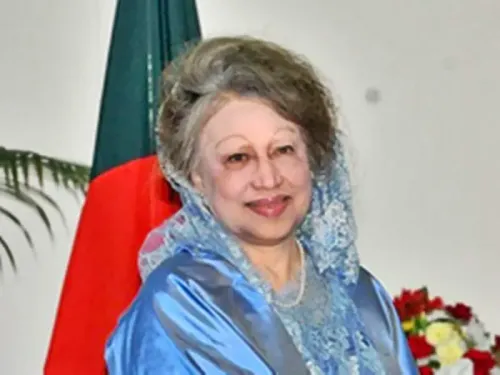What Are the Key Features of the Kuala Lumpur Declaration for ASEAN 2045?

Synopsis
Key Takeaways
- Kuala Lumpur Declaration on ASEAN 2045 outlines a vision for the next 20 years.
- Focus on sustainability and inclusivity is emphasized.
- ASEAN Community Vision 2045 includes four strategic pillars.
- Collaboration with external partners is crucial for navigating future challenges.
- ASEAN aims to enhance local currencies for cross-border transactions.
Kuala Lumpur, May 26 (NationPress) The Kuala Lumpur Declaration on ASEAN 2045, a pivotal document outlining the trajectory for the next two decades of the Association of Southeast Asian Nations (ASEAN), was introduced here on Monday, following its approval by ASEAN leaders at the 46th ASEAN Summit.
In his address post-signing of the declaration, Malaysian Prime Minister Anwar Ibrahim stated that this document will set the course for the group's future, addressing emerging challenges while prioritizing sustainable and inclusive development.
"The future we envision must be built on the principles of sustainability and inclusion. ASEAN's integration must truly be centered on the people. This entails bridging development gaps, enhancing living standards, and investing in the capabilities and aspirations of all our citizens," he remarked.
"This collective framework embodies that belief. It is a vision rooted in realism, driven by determination and made feasible through trust," he added.
Among the significant decisions stemming from the declaration is the official endorsement of the ASEAN Community Vision (ACV) 2045 along with its strategic frameworks across four key pillars: political-security, economic, socio-cultural, and connectivity.
In a press conference prior to the summit, Secretary-General Kao Kim Hourn indicated that the ACV 2045 is intended to act as a practical 20-year strategic roadmap to steer the region's development amid global uncertainties.
"These four strategic frameworks are crafted to guide ASEAN in prioritizing its initiatives while maintaining unity, solidarity, and centrality," he noted, stressing the importance of collaborating closely with external partners, including dialogue, sectoral, and global partners.
"This document is forward-looking and strategic, recognizing the changes in geopolitics, digital transformation, demographic shifts, climate risks, and other urgent matters. It articulates how ASEAN should navigate its future," he emphasized.
Previously, the Malaysian Foreign Ministry stated that ASEAN aims to evolve into a prosperous single market with a highly-skilled and inclusive workforce, driven by productivity and innovation, while integrating sustainability throughout the value chain via the ASEAN Community Vision 2045. The ACV 2045 also advocates for the use of local currencies in cross-border transactions to mitigate the region's exposure to external volatility, enhance disaster risk financing, and address challenges posed by climate change and environmental degradation.
"With this updated vision, ASEAN is projected to become a significant player in the global economy, potentially the fourth largest economy worldwide, founded on sustainable growth and effective governance, empowered by advanced technologies and responsive to emerging opportunities," it further stated.
Malaysia serves as the chair of ASEAN for 2025, hosting the ASEAN Summit and related meetings under the theme 'Inclusivity and Sustainability'.
Established in 1967, the ASEAN grouping comprises Brunei, Cambodia, Indonesia, Laos, Malaysia, Myanmar, the Philippines, Singapore, Thailand, and Vietnam.










